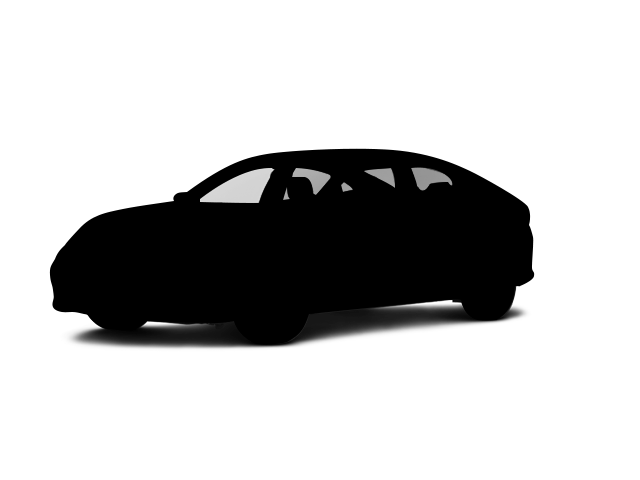For enhanced safety, the front and rear seat shoulder belts of the Nissan Kicks have pretensioners to tighten the seatbelts and eliminate dangerous slack in the event of a collision. The Jeep Compass doesn’t offer pretensioners for its rear seat belts.
The Nissan Kicks has standard driver and front passenger side knee airbags mounted low on the dashboard. These airbags help prevent the driver and front passenger from sliding under their seatbelts or the main frontal airbags; this keeps them better positioned during a collision for maximum protection. Knee airbags also help keep the legs from striking the dashboard, preventing knee and leg injuries in the case of a serious frontal collision. The Compass doesn’t offer a front passenger side knee airbag.
The Kicks SR offers an optional front seat center airbag, which deploys between the driver and front passenger, protecting them from injuries caused by striking each other in serious side impacts. The Compass doesn’t offer front seat center airbags.
Over 200 people are killed each year when backed over by motor vehicles. The Kicks has standard Rear Automatic Braking that uses rear sensors to monitor for objects to the rear and automatically applies the brakes to prevent a collision. The Compass doesn’t offer backup collision prevention brakes.
Both the Kicks and the Compass have standard driver and passenger frontal airbags, front side-impact airbags, driver knee airbags, side-impact head airbags, height adjustable front shoulder belts, four-wheel antilock brakes, traction control, electronic stability systems to prevent skidding, crash mitigating brakes, daytime running lights, lane departure warning systems, blind spot warning systems, rearview cameras, rear cross-path warning, driver alert monitors, available all wheel drive and around view monitors.
The National Highway Traffic Safety Administration does side impact tests on new vehicles. In this test, which crashes the vehicle into a flat barrier at 38.5 MPH and into a post at 20 MPH, results indicate that the Nissan Kicks is safer than the Jeep Compass:
|
|
Kicks |
Compass |
|
|
Front Seat |
|
| STARS |
5 Stars |
5 Stars |
| Chest Movement |
.7 inches |
.8 inches |
| Abdominal Force |
126 lbs. |
134 lbs. |
|
|
Rear Seat |
|
| STARS |
5 Stars |
5 Stars |
| Spine Acceleration |
56 G’s |
56 G’s |
| Hip Force |
669 lbs. |
928 lbs. |
|
|
Into Pole |
|
| STARS |
5 Stars |
5 Stars |
| Max Damage Depth |
11 inches |
12 inches |
| HIC |
303 |
355 |
New test not comparable to pre-2011 test results. More stars = Better. Lower test results = Better.
Side impacts caused 23% of all road fatalities in 2018, down from 29% in 2003, when the Insurance Institute for Highway Safety introduced its side barrier test. In order to continue improving vehicle safety, the IIHS has started using a more severe side impact test: 37 MPH (up from 31 MPH), with a 4180-pound barrier (up from 3300 pounds). The results of this newly developed test demonstrates that the Nissan Kicks is much safer than the Compass:
|
|
Kicks |
Compass |
| Overall Evaluation |
GOOD |
MARGINAL |
| Structure |
GOOD |
MARGINAL |
|
|
Driver Injury Measures |
|
| Head/Neck |
GOOD |
GOOD |
| Head Injury Criterion |
158 |
189 |
| Torso |
ACCEPTABLE |
ACCEPTABLE |
| Torso Max Deflection |
1.26 in |
1.3 in |
| Torso Deflection Rate |
6 MPH |
9 MPH |
| Pelvis |
ACCEPTABLE |
POOR |
| Pelvis Force |
915 lbs. |
1517 lbs. |
| Head Protection |
GOOD |
GOOD |
|
|
Passenger Injury Measures |
|
| Head/Neck |
GOOD |
GOOD |
| Head Injury Criterion |
182 |
202 |
| Neck Compression |
201 lbs. |
223 lbs. |
| Torso |
ACCEPTABLE |
ACCEPTABLE |
| Shoulder Deflection |
1.5 in |
2.13 in |
| Shoulder Force |
268 lbs. |
491 lbs. |
| Torso Max Deflection |
1.34 in |
1.77 in |
| Torso Deflection Rate |
6 MPH |
14 MPH |
| Pelvis |
GOOD |
ACCEPTABLE |
| Pelvis Force |
669 lbs. |
937 lbs. |
| Head Protection |
GOOD |
GOOD |

